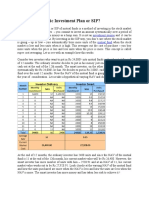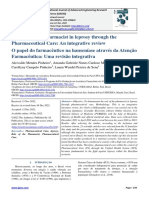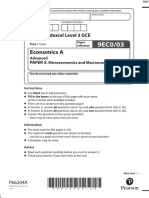0% found this document useful (0 votes)
246 views24 pagesSip, SWP
The document discusses three investment tools - Systematic Investment Plan (SIP), Systematic Withdrawal Plan (SWP), and Systematic Transfer Plan (STP). SIP allows regular investing of small amounts in mutual funds. SWP allows generating steady monthly income from investments. STP allows investing large sums in volatile markets. The document provides details on how these tools work, their benefits like rupee cost averaging and power of compounding, and how they can aid retirement planning.
Uploaded by
arshita sharmaCopyright
© © All Rights Reserved
We take content rights seriously. If you suspect this is your content, claim it here.
Available Formats
Download as PDF, TXT or read online on Scribd
0% found this document useful (0 votes)
246 views24 pagesSip, SWP
The document discusses three investment tools - Systematic Investment Plan (SIP), Systematic Withdrawal Plan (SWP), and Systematic Transfer Plan (STP). SIP allows regular investing of small amounts in mutual funds. SWP allows generating steady monthly income from investments. STP allows investing large sums in volatile markets. The document provides details on how these tools work, their benefits like rupee cost averaging and power of compounding, and how they can aid retirement planning.
Uploaded by
arshita sharmaCopyright
© © All Rights Reserved
We take content rights seriously. If you suspect this is your content, claim it here.
Available Formats
Download as PDF, TXT or read online on Scribd
/ 24





























































































